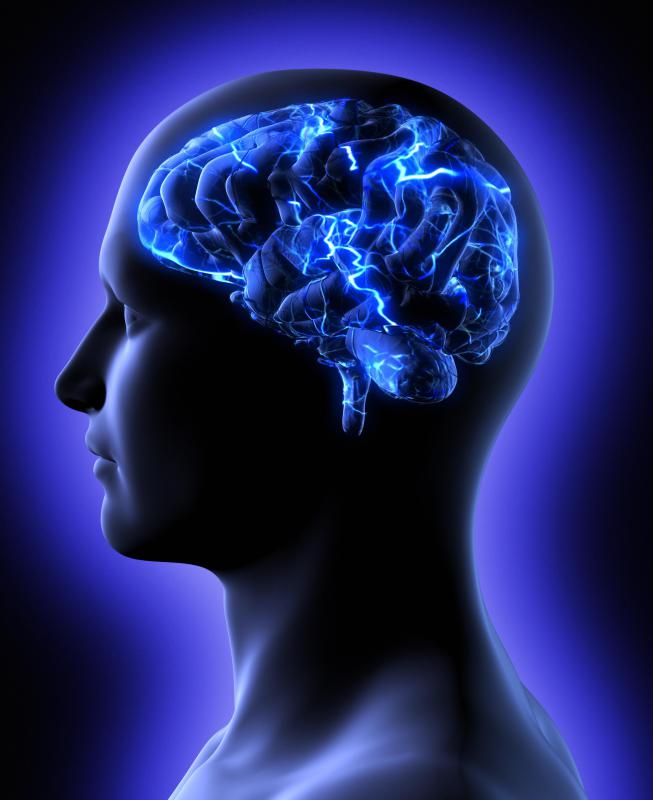At WiseGEEK, we're committed to delivering accurate, trustworthy information. Our expert-authored content is rigorously fact-checked and sourced from credible authorities. Discover how we uphold the highest standards in providing you with reliable knowledge.
What are Brain Ventricles?
Brain ventricles are four fluid-filled chambers in the human brain that help to cushion the brain from external trauma. The brain ventricles also function as reservoirs for cerebrospinal fluid (CSF), a substance important for carrying hormones, excretory products, toxins, and metabolites throughout the brain. The largest ventricles are the two lateral ventricles, which are under the cerebral hemispheres of the brain — one on the right side and one on the left. The third ventricle is in the area of the brain called the diencephalon, and the fourth ventricle lies within the brain stem.
The four brain ventricles are all connected, and CSF can flow between them. The lateral ventricles connect via the interventricular foramen, which is also known as the foramen of Monroe. Fluid can flow from the third ventricle to the fourth ventricle through the cerebral aqueduct, also known as the aqueduct of Sylvius. CSF exiting from the fourth ventricle leaves through the foramina of Luschka and Magendie. From there the CSF can enter the central canal of the spinal cord.

The brain ventricles lie between two distinct membranes, which are called meninges. The membrane closest to the surface of the brain is the pia mater. This thin, translucent membrane adheres to the curves of the brain surface. The CSF filling the ventricles lies above the pia mater but below the arachnoid layer. External to the pia and arachnoid membranes lies the dura mater, which is a rigid sheath encasing all of the brain material.

All of the brain ventricles contain CSF. This liquid is important as a source of nutrition for brain structures and as a way of removing waste products. The CSF also serves as a cushion that protects critical parts of the brain from external pressure, such as a blow to the head. Main components of the CSF include water, less than 50 milligrams per deciliter of protein, from 50 to 75 milligrams per deciliter of glucose, and from zero to five blood cells per microliter. Healthy CSF is clear and colorless.

CSF not only fills the brain ventricles but also surrounds the brain and the spinal cord. It fills the space between the arachnoid membrane and the pia mater, the membranes lining the brain and spinal cord. Therefore, the CSF is found within the brain, surrounding the brain, around the cerebellum, and encircling the length of the spinal cord.
The CSF fills the brain ventricles according to a specific flow pattern. It is produced by tissue called the choroid plexus; this substance can be found in all of the ventricles except for certain parts of the lateral ventricles. After being formed by the choroid plexus, CSF circulates throughout the ventricles and into the spinal cord. It is eventually re-absorbed by arachnoid granulations, which are structures found between the pia mater and arachnoid membrane in the superior aspect of the cerebral hemispheres. The arachnoid granulations feed the CSF into the venous system.
AS FEATURED ON:
AS FEATURED ON:













Discuss this Article
Post your comments